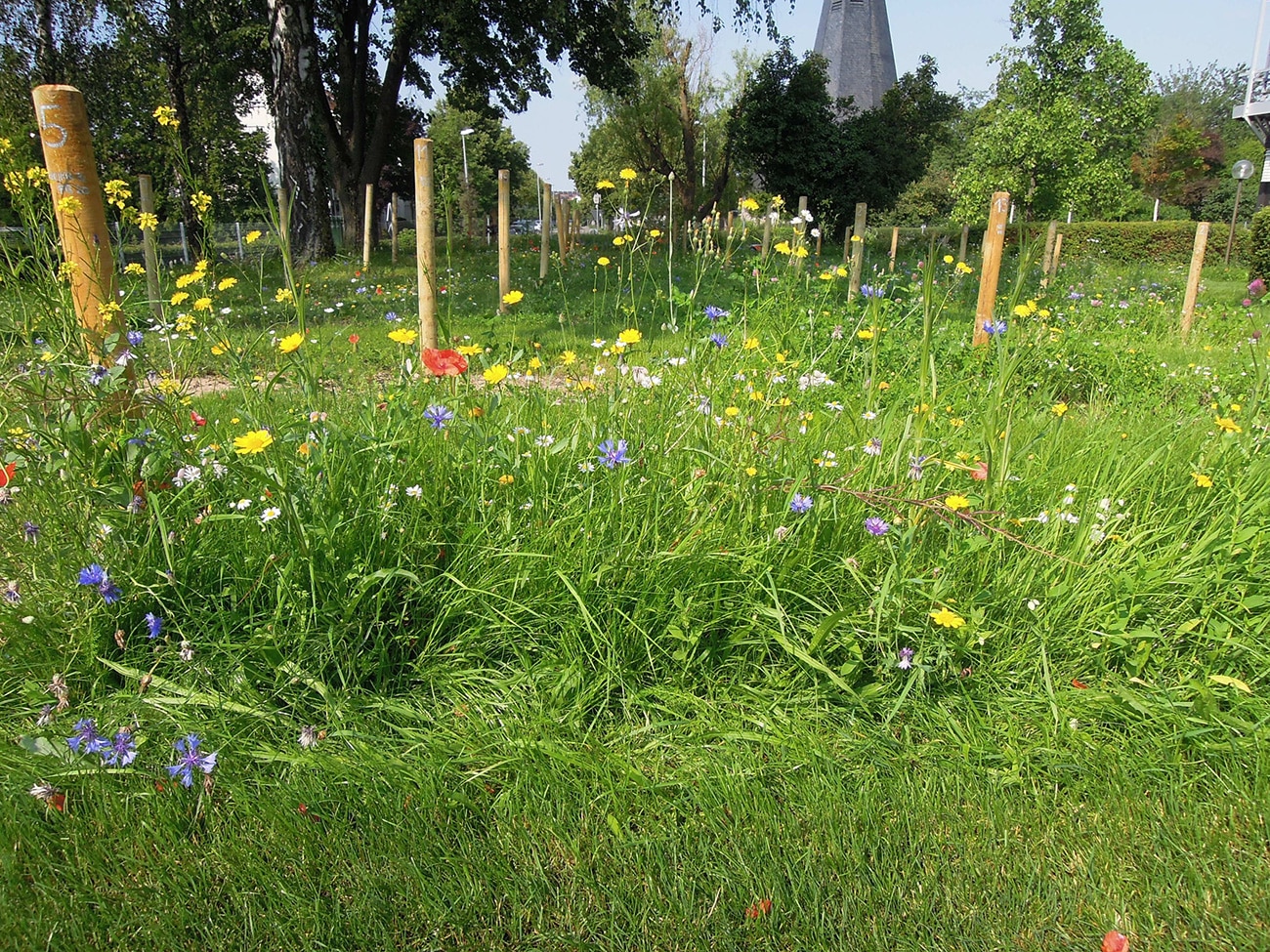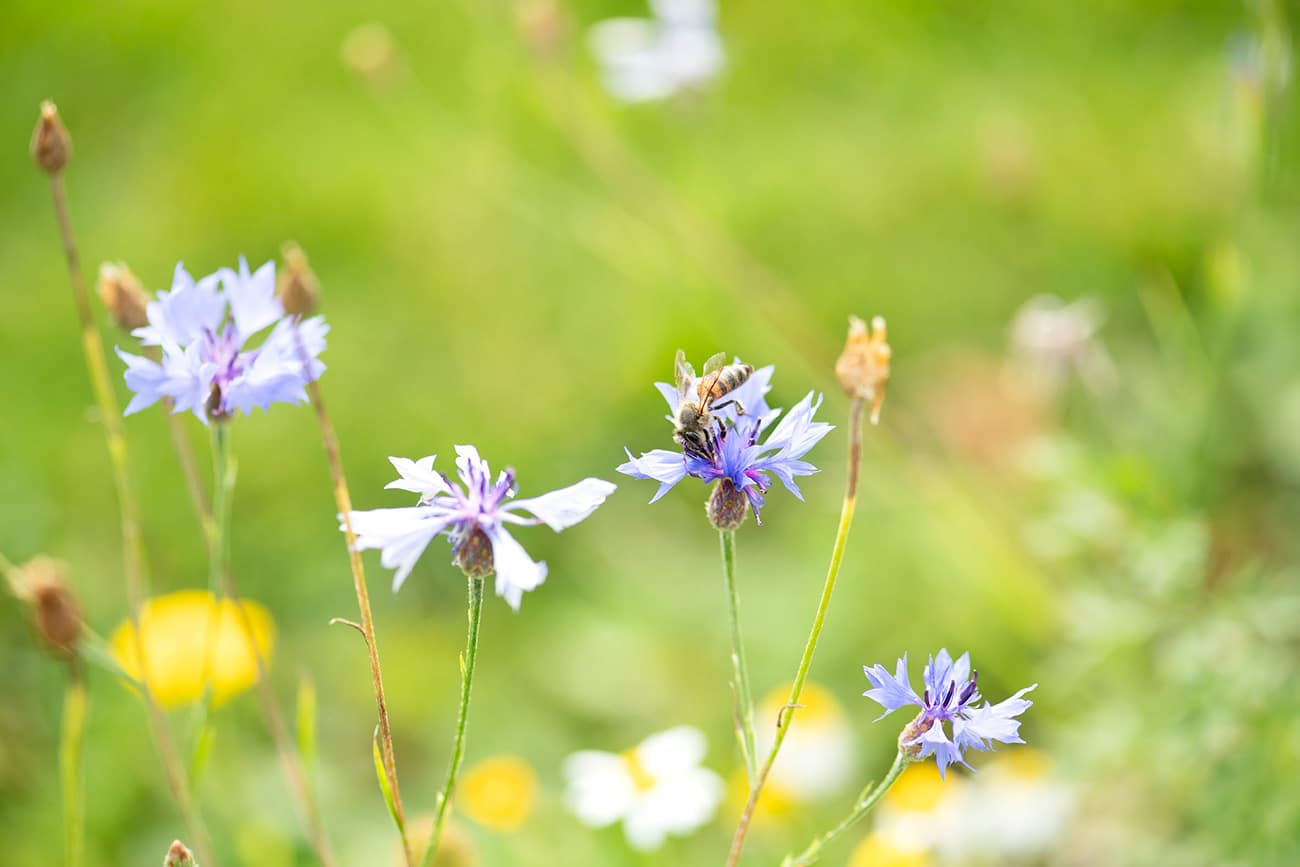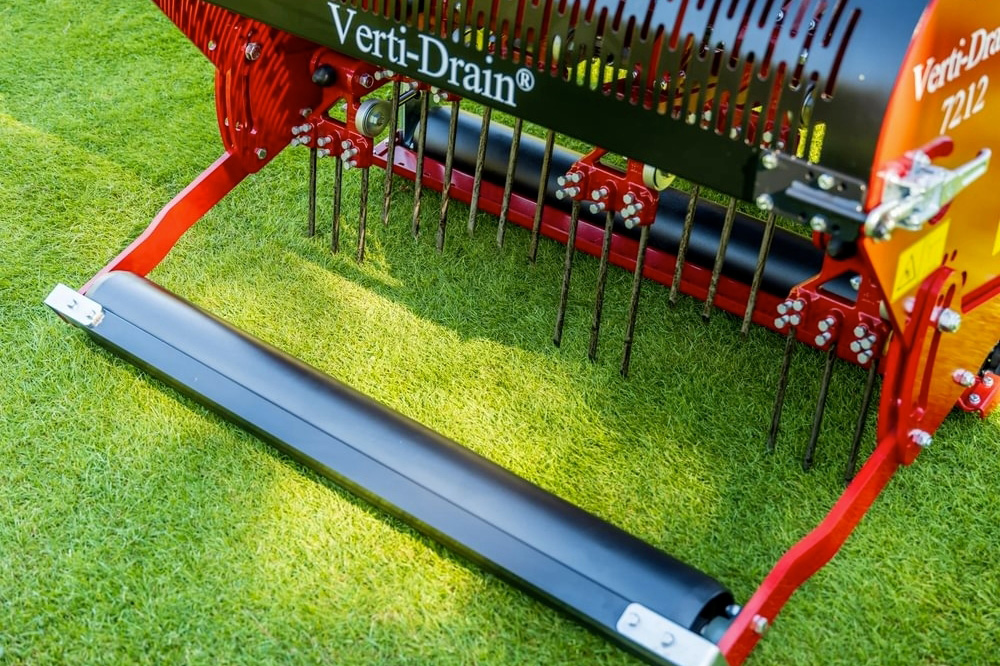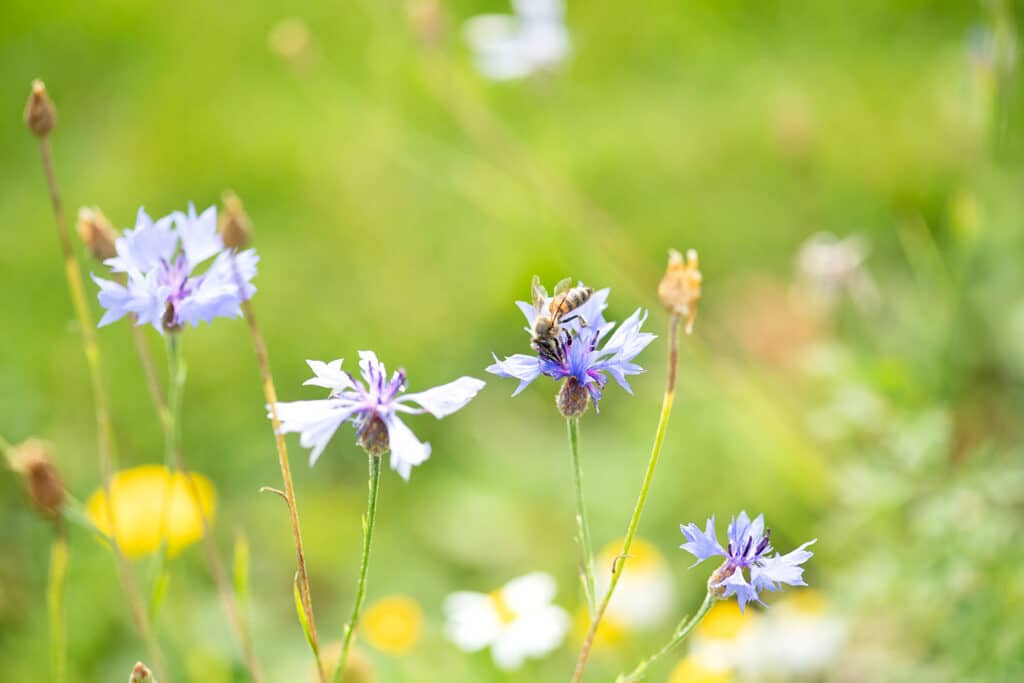
Aesthetically and ecologically valuable
Borders along lawns mowed by robotic mowers are pleasing to the eye and improve biodiversity
The lawn is a central focal point in many gardens that is increasingly being maintained by a robotic mower. However, it turns out that the lawn edges are often not mowed for technical reasons. A study by the University of Hohenheim, conducted with support from STIHL, now shows that sowing flower mixtures in these strips not only looks nice but also provides a better food source for pollinating insects and improves garden biodiversity. According to the experts, flower mixtures of native seeds are the best choice.
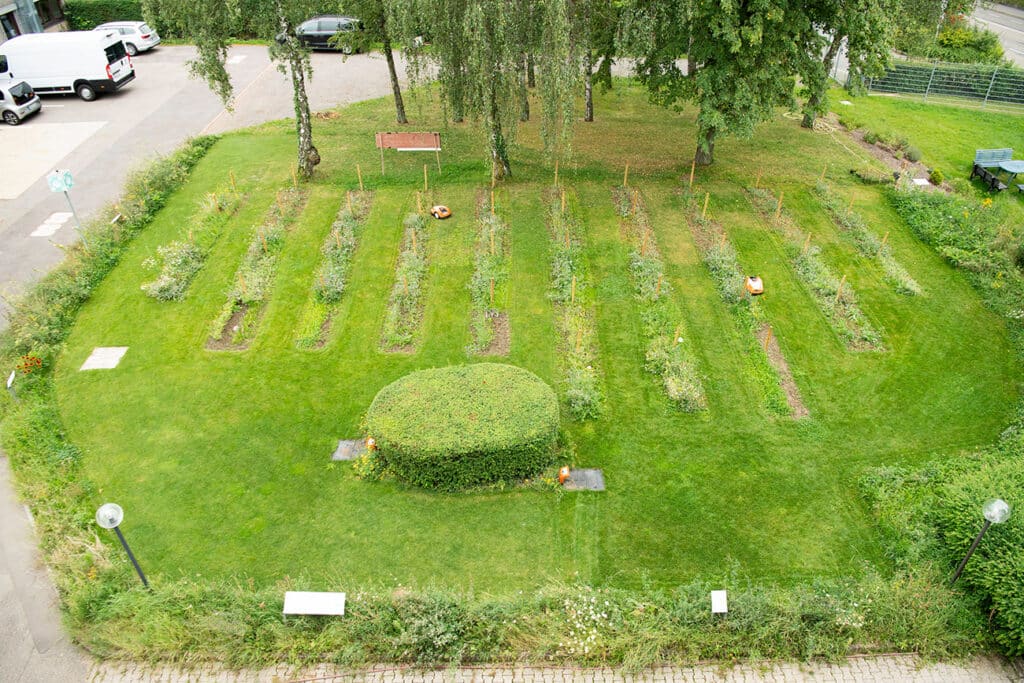
In the study "Anlage von Blühflächen zur Optimierung des Erscheinungsbildes von robotergemähten Rasenflächen" (Construction of flower-rich zones to improve the aesthetics of lawns mowed by robotic mowers), the trial field provided by STIHL was divided into strips of flower-rich zones. A total of 79 trial plots were established on which different flower mixtures were sown.
Gardens offer plenty of opportunities for increased biodiversity. This also applies, for example, to lawns maintained by robotic mowers. Often an edge strip of 10 to 15 centimeters remains uncut because the housing of the robotic mower limits the radius of action. Usually these edges are trimmed with a manual edge trimmer so that the lawn looks perfectly manicured. A master thesis conducted with the support of garden machinery manufacturer STIHL at the University of Hohenheim examined to what extent the targeted sowing of these strips with flower mixtures improves the appearance of lawns to such an extent that regular trimming of the edges is no longer necessary on the one hand, and contributes to biodiversity on the other. The study builds on an earlier master's thesis from 2020, which analyzed the impact of mowing technology on the biodiversity of lawns. That study concluded at the time that robotic mowers, which consistently keep the lawn short, allow for greater diversity than manual edging trimmers used only weekly. The study also found that borders along lawns mowed by robotic mowers significantly increase biodiversity.
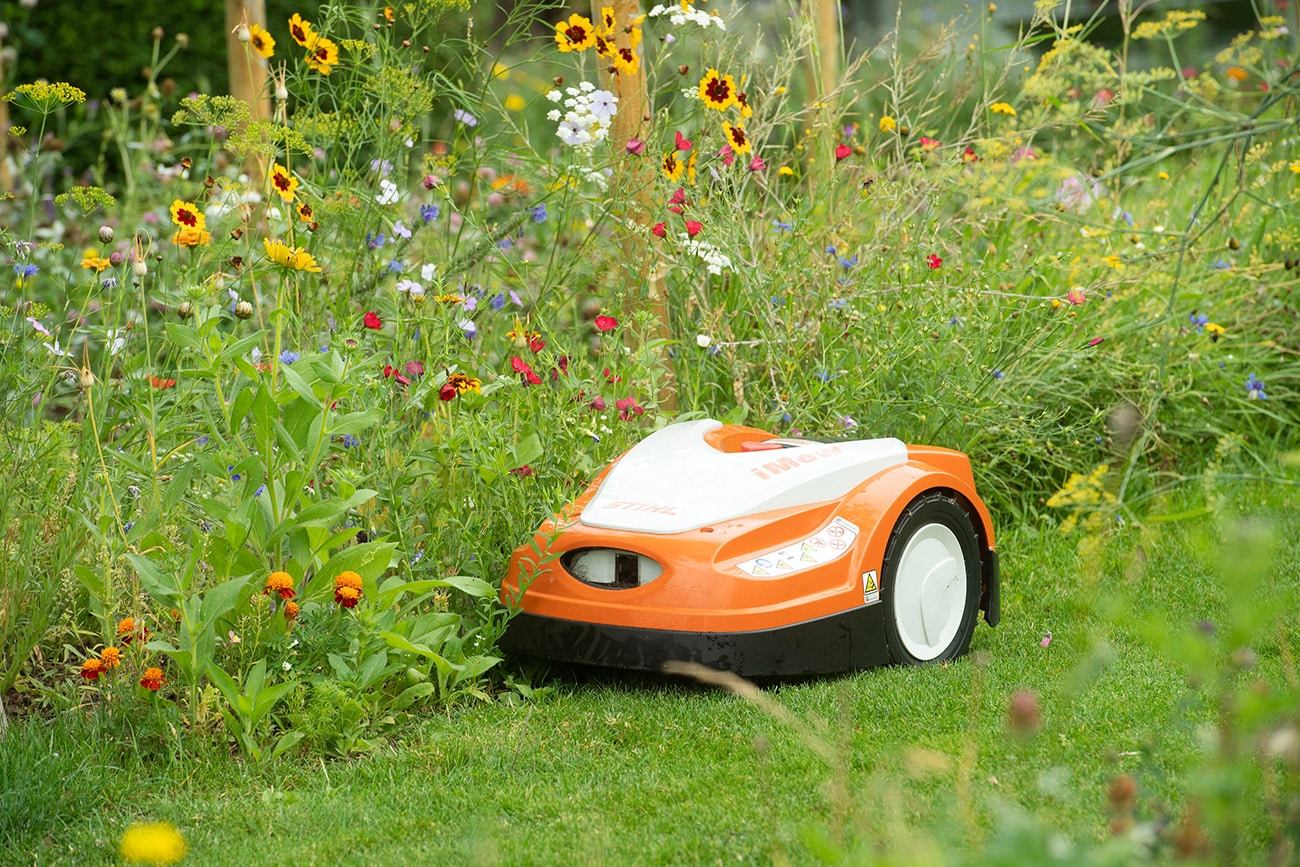
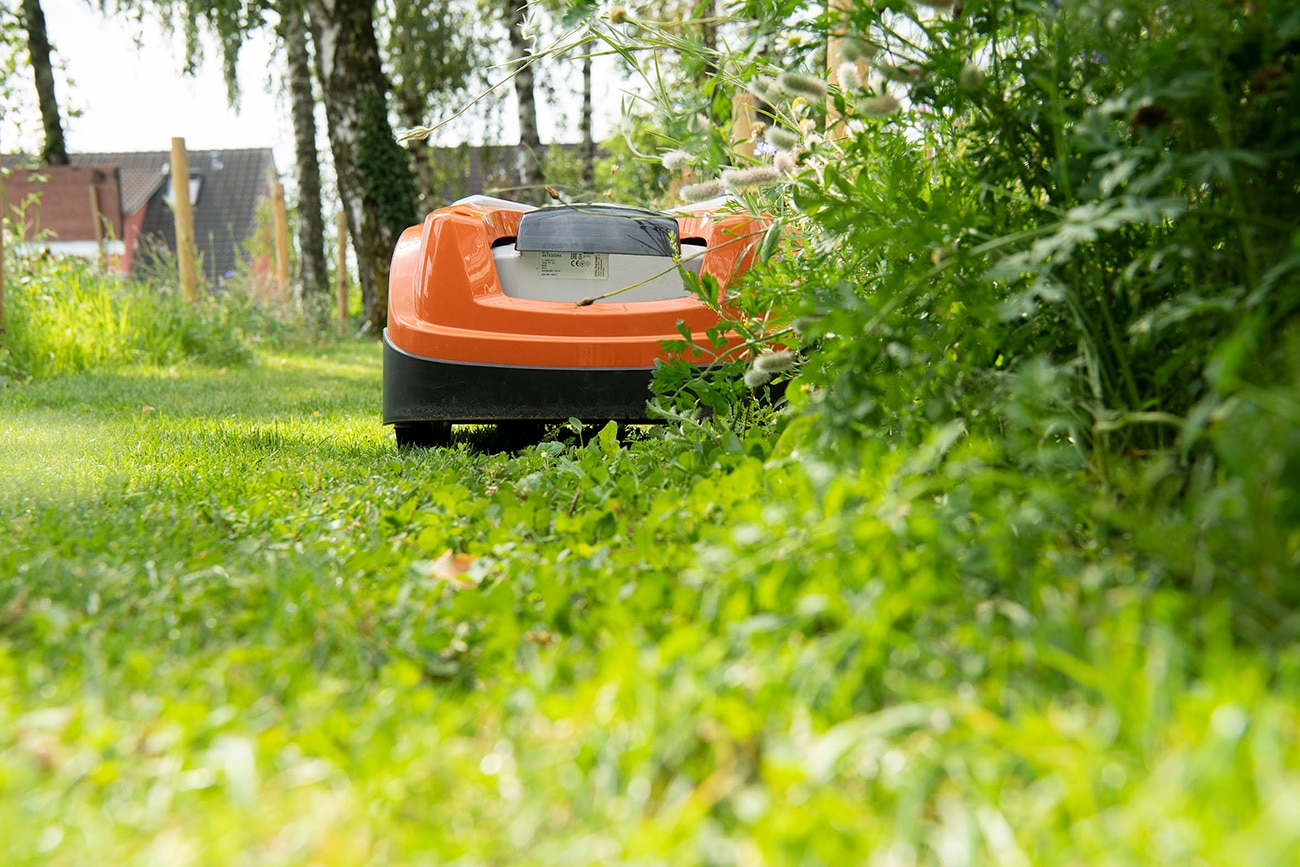
During the study period, two STIHL RMI 422 robotic mowers mowed the lawn and transition areas with the flower mixtures.
Field trial with different flower mixtures
In her current research, master's student Alicia Läpple investigated which seed mixtures are robust enough to be mowed or run over by a robotic mower and thus ideal for creating borders that are of great value for biodiversity. To this end, she laid out flowering areas on a lawn in the form of strips and sowed them with different flower mixtures. The study included a total of 79 plots. Alicia Läpple used commercially available native seed mixtures and special native seed mixtures that she had composed herself from native seeds of low and medium annual, biennial and perennial plants. A wire was then laid to delineate the boundaries of the trial area. Starting in July 2021, two STIHL iMOW RMI 422 robotic mowers mowed the lawn strips between the flower plots at a cutting height of 3.5 and 6 inches.
From early July to late August 2021, the student observed the borders regularly. Based on vegetation density and appearance, she identified the flower mixtures that could best withstand the daily passage of a robotic mower. This showed that growth height and growth form determined the suitability of different plants to form a flower strip cut by robotic mowers. The cutting height was also found to be very important: a high cutting height (6 cm) is better for growth than a low cutting height (3.5 cm). Therefore, the master's student recommends adjusting the cutting height of the robotic mower when creating borders. Since herbs and grasses can withstand a low mowing height better than wildflowers - this is especially true for flower mixtures composed entirely of flowers - the student also examined a two-stage sowing with a first row of low-growing flower mixtures "at the front" and a second row of high-growing flowers "at the back." This showed that in this second row, which is further away from the lawn, it is also possible to sow flower mixtures that are visually attractive without being mow-tolerant or liable to being run over.
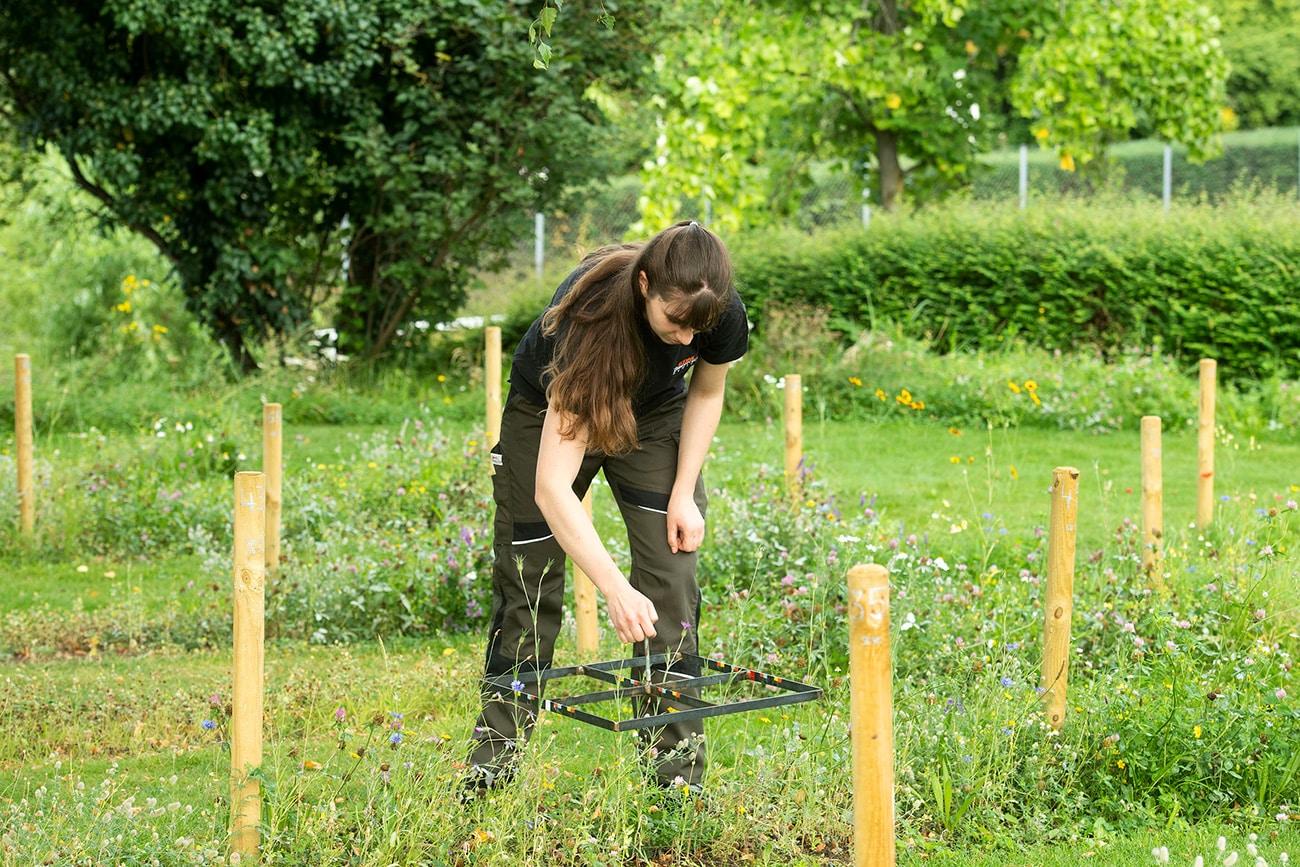
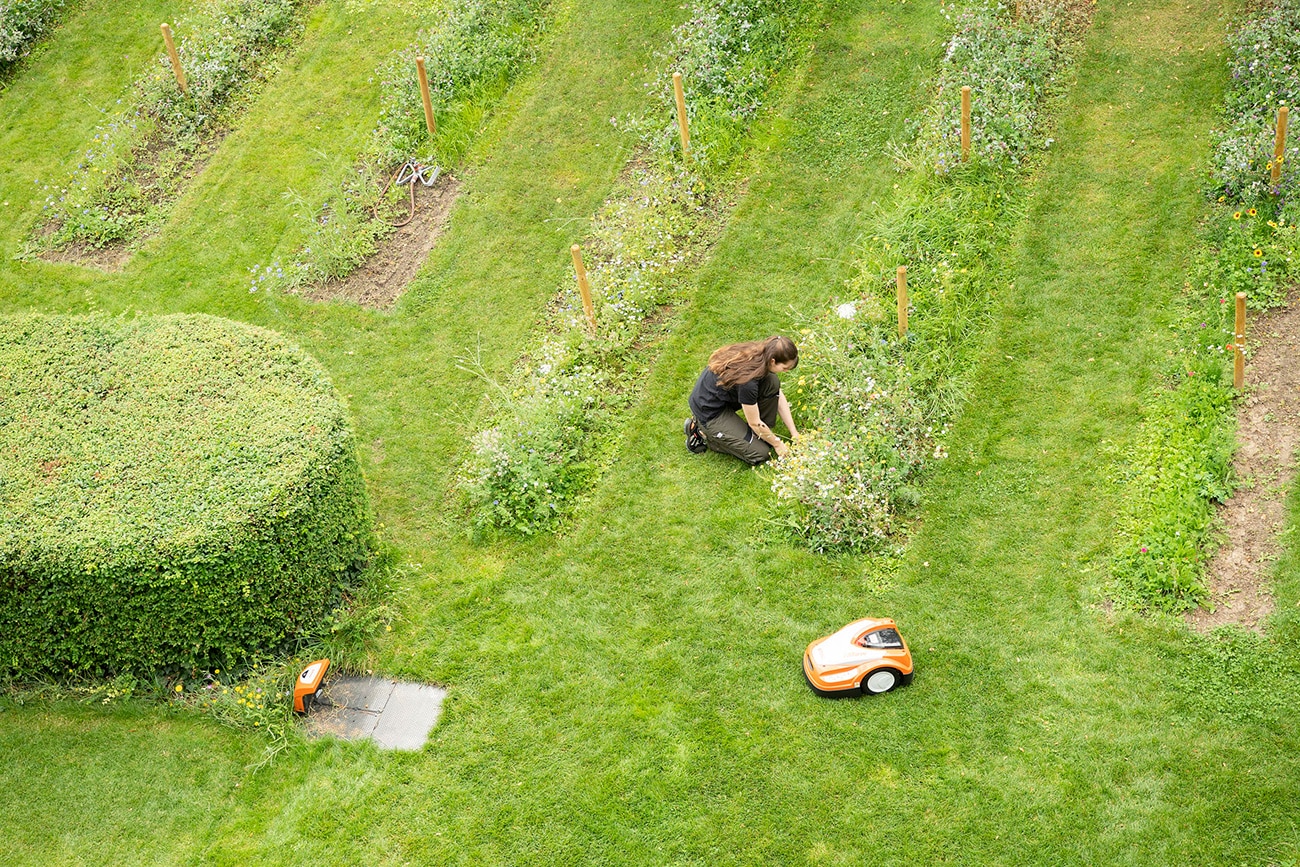
As part of the field research, the master's student regularly examined the density of vegetation and the appearance of the borders to determine what requirements flower mixtures must meet to withstand mowing or running over by a robotic mower.
Native seeds promote biodiversity
In addition, the master's student also examined the extent to which the creation of borders promotes biodiversity. To this end, she observed and documented the hymenoptera that visited the strips. From her observations, she concluded that borders of native seed mixes provided insects with an important food source throughout the research period. The future agricultural engineer also found that the increase in flowering plant species was accompanied by an increase in insect species observed. For example, Alicia Läpple found wild bees, honey bees, bumblebees, wasps, hoverflies, flies, Spanish flies, ladybugs, wall lice and cabbage whites. Thus, the study clearly showed that planting borders not only improves the aesthetics of the site, but also promotes biodiversity. This is especially true when native flower mixtures are planted - the study found that flower-visiting insects prefer such flower mixtures to exotic plants. People who want to both beautify their garden and promote biodiversity are therefore best to use native seed mixtures when creating borders. It is also possible to combine different native flowering plants, for example by combining a low or medium-growing mixture in the front section - where the robotic mower partially passes - with a high-growing mixture in the rear section. This technique especially increases the quality of biodiversity.
Borders at the edge of lawns are not only aesthetically pleasing, but also make an important contribution to promoting biodiversity in the garden.
A look at the results
As part of her master's thesis titled "Anlage von Blühflächen zur Optimierung des Erscheinungsbildes von robotergemähten Rasenflächen" (Construction of Flowering Areas to Improve the Aesthetics of Lawns Mowed by Robotic Mowers), Alicia Läpple, a student at the University of Hohenheim (Baden-Württemberg), analyzed which native flower mixtures are best able to withstand the daily use of a robotic mower during the summer of 2021. The goal was to determine which flowering plants are suitable for use in lawn edges maintained by robotic mowers. She sowed both commercially available flower mixtures - mixtures for flower/herb meadows (perennials), field flower mixtures (annuals) and mixtures for multicolored border flowers (perennials) - and special mixtures that she had composed herself from native seeds in low and medium growth forms (annual, biennial and perennial plants in each case). In the field trial, the multi-colored border flower mixtures and the mixtures for flower/herb meadows proved suitable for grass edges cut by robotic mowers. These flower mixtures scored highest in the overall evaluation and were equally attractive in terms of vegetation density and resistance to mowing. The mixture for multi-colored borders came out on top in the "Aesthetics" and "Quality of Biodiversity" criteria.
